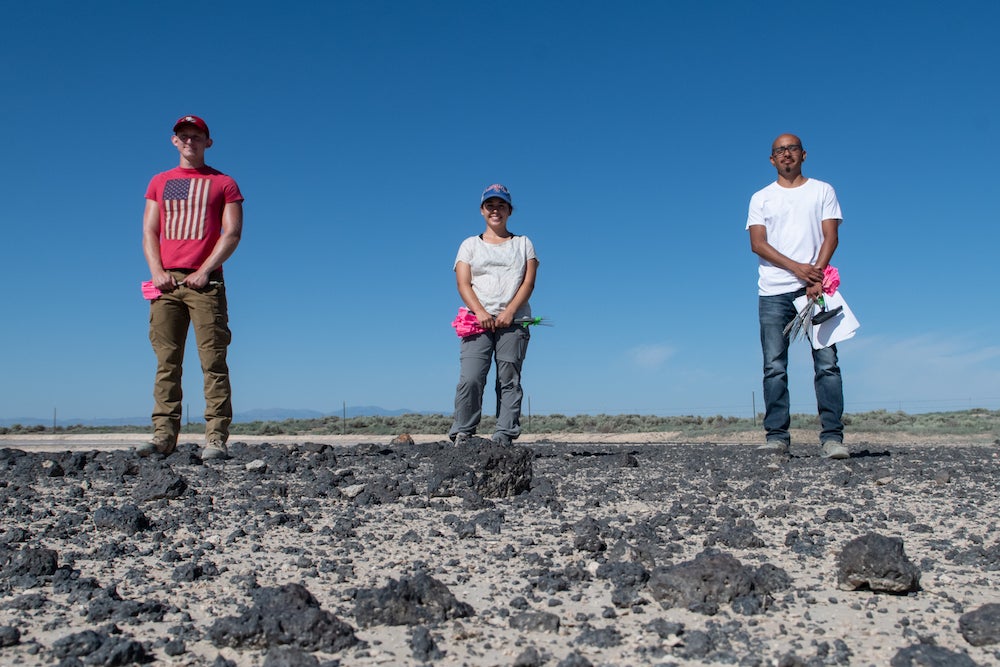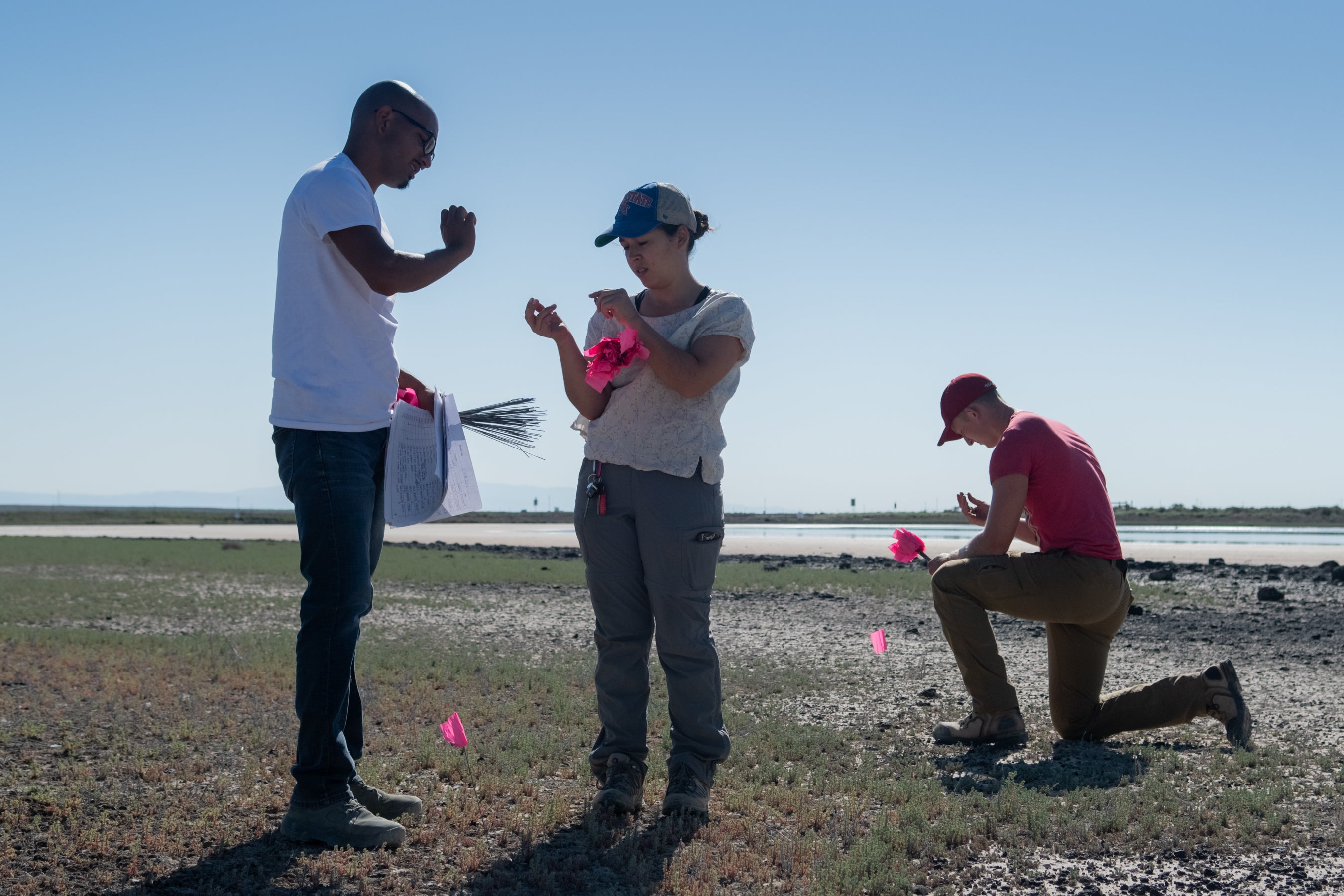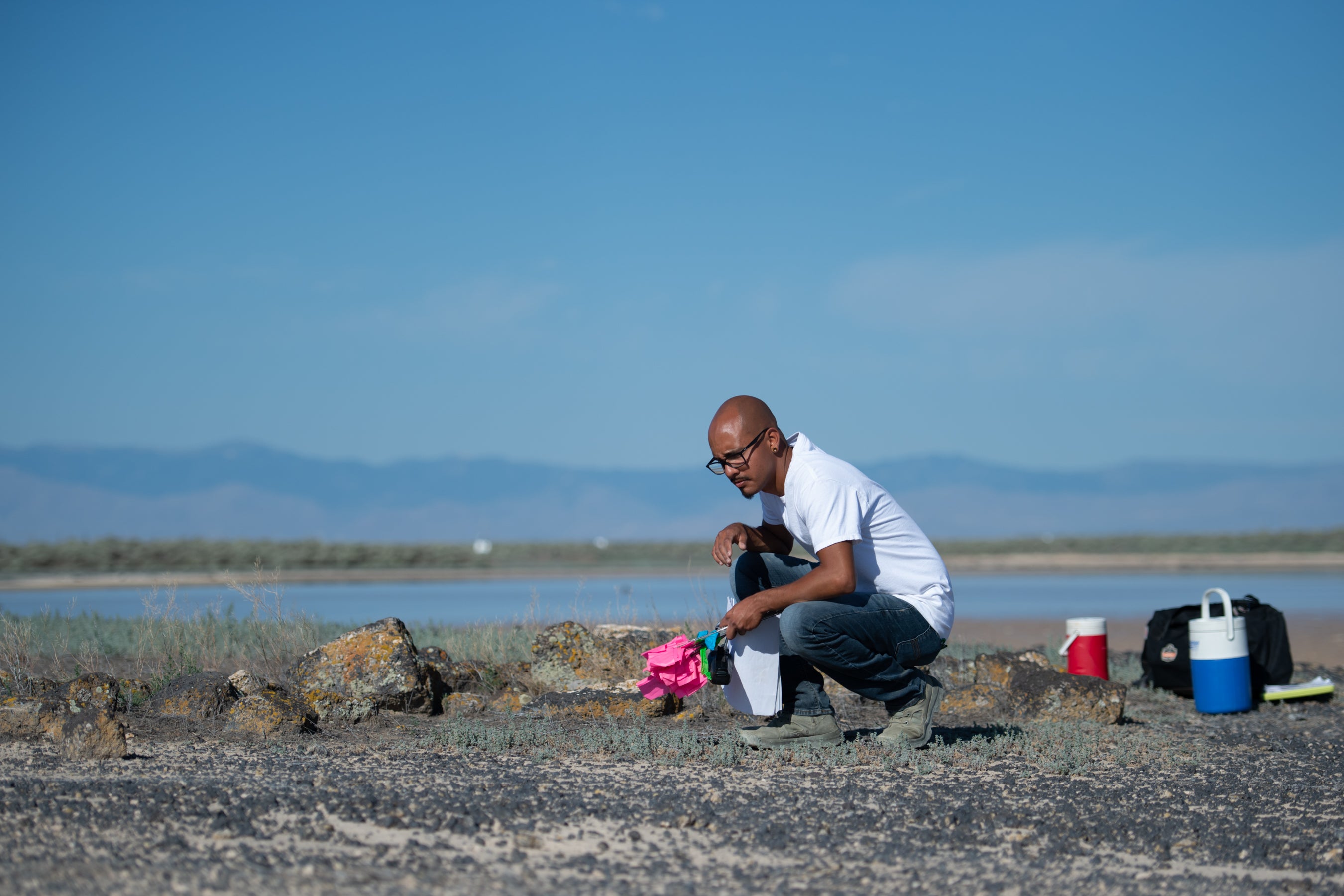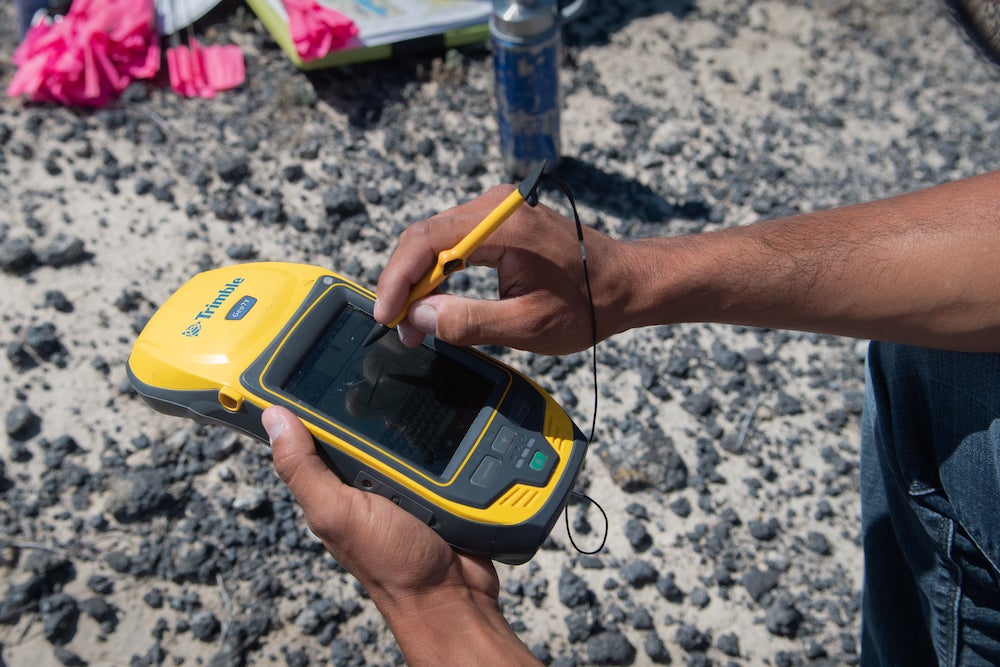History literally runs quite deep. Beneath parking lots, in muddy river-beds and even on military testing grounds: no matter where one stands, records of the earth’s and humanity’s history dwell below. Accidental discoveries of these archaeological sites fuel curiosity and wonder, and connect people to their cultural heritage. But these discoveries often prompt another important question: how does one protect a site that hasn’t yet been found?
For Julio Gonzalez Tepetla, a Boise State’s master student in applied anthropology, Boise State offered him the opportunity to do exactly that. Under the mentorship of associate professor of anthropology Pei-Lin Yu and Distinguished University Professor Emeritus Mark Plew, and in coordination with the Idaho National Guard, Gonzalez Tepetla is working to predict and protect archeological and cultural heritage sites that may exist in the Orchard Combat Training Center.

The combat training center is a 143,000 acre military training center located south of Boise, within the boundaries of the Morley Nelson Snake River Birds of Prey National Conservation Area. However, in not so distant history, this piece of land was home to multiple Native American tribes including the Shoshone, Bannock and Paiute peoples.
To protect undiscovered archaeological and cultural heritage sites on the land, Gonzalez Tepetla took up the innovative research begun by fellow Boise State anthropology alumnus Michael Bishop (MAA, ‘16) to identify likely locations of archeological sites using predictive modeling. Implementing Geographic Information System (GIS) software, lidar (light detection and ranging) elevation data and cultural point data from known sites, Gonzalez Tepetla created a map of more than 24,000 acres, identifying areas of high probability for encountering archaeological sites within the training center.

In addition to recent Native American cultural heritage sites within the training center’s grounds, there also may be much older archaeological remains of Native life, as well as historic archaeological sites from the westward expansion and land-use of Euro-Americans.
Gonzalez Tepetla and his wife moved to Boise from Phoenix, and he originally intended to work in a medical office. But when he realized that he would have the opportunity to pursue higher education, he found his passion pulling him in another direction. Gonzalez Tepetla asked himself, “What would I do for free for the rest of my life?” The answer was anthropology. He began this research in 2018 with the Idaho National Guard as an anthropology major with a minor in Native American studies, and graduated with his bachelors in May 2020.

“This was a big deal for my family and me as I will be the first to earn a bachelor’s degree and attend graduate school. I am fortunate to be in a field that I love where I can conduct awesome research and hopefully inspire my grade-school cousins to pursue a college education,” said Gonzalez Tepetla.
He also spoke warmly of the mentors in the anthropology department who helped him find his calling.
“I just feel like if I’m working on a project with them, I can’t fail, because I have them at my side. They will always make sure to guide me in the right direction,” he said.
With the financial support of a Humanities Education Research Council fellowship from the Idaho State Board of Education, Gonzalez Tepetla began field-testing the predictions of his map in summer 2020 to refine the model for his graduate work.
If sites are found, they will receive protective measures to ensure their safety from combat training exercises and equipment “so that future generations can learn more about them and at the same time protect the cultural heritage of Native Americans,” said Gonzalez Tepetla.

A heritage of educational excellence
An essential foundation of the research being conducted at Orchard Combat Training Center is the long-standing relationship between Boise State and the Idaho National Guard. According to Plew, the national guard conducted a survey on the training center in the 1980s and determined that there were many historic cultural sites. As more sophisticated survey methods were developed, even greater numbers of sites have been detected. To aid in site discovery and protection, Boise State helped monitor these sites and developed a summer anthropology program that provides students with hands-on field experience at the training center. This program has prepared students like Gonzalez Tepetla, as well as many alumni.
“Boise State anthropology alums fill some of the most important federal and state positions in cultural and archaeological protection in Idaho and the region,” said Yu. “The strong and enduring connection between anthropology and the Idaho National Guard supports our students through top notch hands-on experience with field archaeology as well as cutting edge remote sensing and analytical approaches.”
Three such Boise State anthropology alumni have been integral to providing in-the-field education to current students, as well as conducting critical research and protection of these cultural sites through their positions with the Idaho National Guard. They are: cultural resources manager and tribal liaison, Jacob Fruhlinger (BA ‘98, MA ‘04, University of Idaho); cultural resource specialist, James Eschenbrenner (BA ‘12, MAA ‘16); and archaeology crew chief, Tessa Amend (BS ’18, MAA ’19).
“The most rewarding part for me is being able to provide opportunities for students and the anthropology department as a whole while getting valuable data that is needed for the Idaho National Guard to continue training soldiers and airmen in a manner that helps protect and sustain the fragile environment,” said Fruhlinger.

Fruhlinger explained that any sites that are located and recorded in relation to Gonzalez Tepetla’s map will be processed with the Bureau of Land Management, the Idaho State Historic Preservation Office, and will follow the Government to Government Consultation protocols with all six tribes having sovereign rights to the area.
“We coordinate with the tribes on everything we do to ensure that we minimize potential impacts to any known resources,” said Fruhlinger.
Both alumni found the programs they were involved with as students to be especially meaningful.
“It was a privilege to get to work with Mr. Tepetla and to collaborate with him and his very supportive faculty. The entire team was efficient, knowledgeable and collaborative all the way to the end. We couldn’t have been more impressed by the entire team from Boise State University,” said Eschenbrenner.
